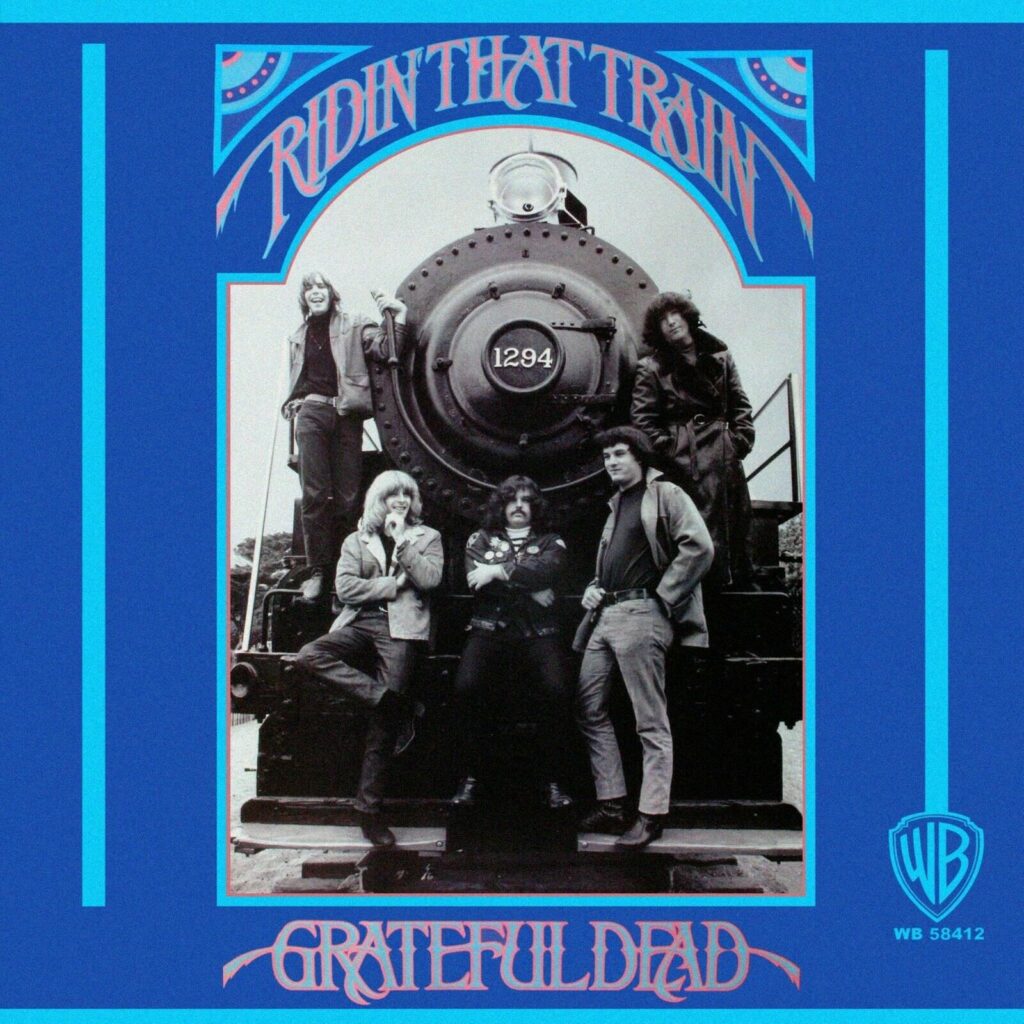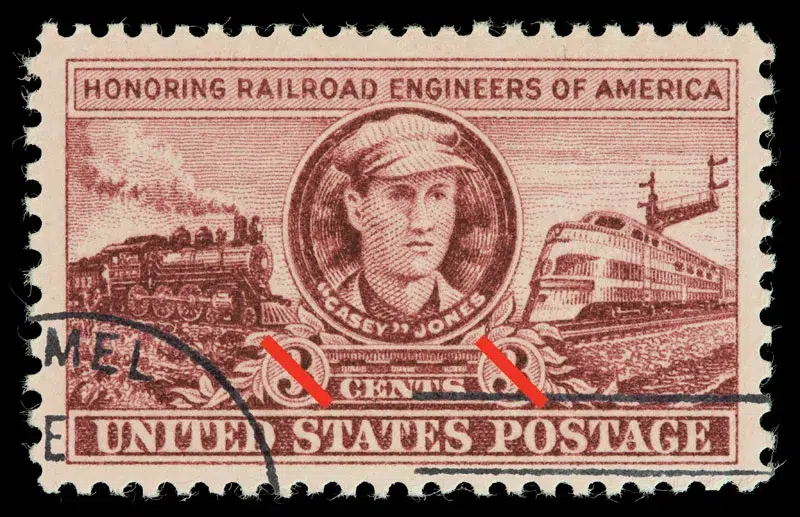The Meaning of the Grateful Dead’s “Casey Jones”

“Casey Jones” saw release on the Grateful Dead’s 1970 album, Workingman’s Dead, and found its way into the band’s live rotation as early as the summer of 1969. It quickly became one of their most widely-recognized songs, and it’s often either this or “Touch of Grey” that first comes to mind when you ask a regular person if they know about the Grateful Dead.
It’s likely that the straightforward and memorable chorus is to thank for that: “Drivin’ train, high on cocaine.”
With lyrics by Robert Hunter and music by Jerry Garcia, “Casey Jones” is an example of Hunter’s ability to tell a story that fits with both the ethos of the Grateful Dead and the greater folklore conversation that has taken place since the beginning of time.
The song tells the story of a train engineer who is under the influence of cocaine, and as you might expect, is operating the machine with excessive speed. There’s trouble all around, and he doesn’t make it any easier on himself with his actions.
As always, Hunter pulls from a wide range of inspiration with “Casey Jones”. The key here is that Casey Jones was a real person who had already received a good deal of attention from folk music by the time that Hunter contributed his words to the melting pot.
Before we get into all that, though, we have to hear some thoughts on the song from Garcia himself. He spoke about it with Charles Reich in an interview included in the 2003 book Garcia: A Signpost To New Space:
Reich: Does “Casey Jones” grate on you when you hear it sometimes?
Garcia: Sometimes, but that’s what it’s supposed to do. (laughs)
Reich: It’s such a sing-songy thing…
Garcia: Right. And it’s got a split-second little delay, which sounds very mechanical, like a typewriter almost, on the vocal, which is like a little bit jangly, and the whole thing is, well…I always thought it’s a pretty good musical picture of what cocaine is like. A little bit evil. And hard-edged. And also that sing-songy thing, because that’s what it is, a sing-songy thing, a little melody that gets in your head.
Garcia: A Signpost To New Space, page 96.
Jerry says the song sounds the way that cocaine feels. It’s catchy and upbeat but also can be just a little bit hard on the ears, just as cocaine can be hard on the body and mind. Garcia’s take on the arrangement is right in line with the story that Hunter weaves into the lyrics, with this chaotic conductor pushing his engine to its limits.
Who was Casey Jones?

The real Casey Jones was John Luther “Casey” Jones, a locomotive engineer for the Illinois Central Railroad who lived from 1863 to 1900. He was killed when his train collided with a freight train that stalled out on the tracks ahead of him.
Jones was noted for keeping a very tight schedule, and generally operating his train on time. At the time, this often required him to operate his train at unsafe speeds in order to maintain his strict standard for punctuality.
One night, Casey had picked up an extra shift after another engineer didn’t show up to work, so he had already worked a full day shift before starting his usual night shift.
It was unlike him, but his 11:35pm southbound train from Memphis, TN to Canton, MS departed over an hour late, but he was determined to make up the time with the powerful ten-wheeler Engine No. 382, known as “Cannonball”.
Coming into the station in Vaughan, Jones didn’t know that there were already three trains stopped there until it was too late. He did his best to slow his train down, managing to do so well enough to avoid an all-out disaster.
Jones’ exceptional skill at slowing the train down managed to save the lives of his passengers, but unfortunately he was not able to save his own life, as he was killed when the front of his train collided with the stopped freight train.
For this Casey Jones is remembered as a hero, and he was soon immortalized in the traditional song, “The Ballad of Casey Jones”, also known as “Casey Jones, the Brave Engineer”.
It has been played and recorded by a number of artists including Johnny Cash, Mississipi John Hurt, Billy Murray, and many more. The Grateful Dead even played the tune live during a few acoustic sets in 1970, and Jerry played it even more with the Jerry Garcia Acoustic Band and David Grisman.
Of course, “The Ballad of Casey Jones” and the Casey Jones story in general are what inspired the Grateful Dead’s “Casey Jones”, plus dozens of other songs about the engineer by other artists.
Listen to versions of the traditional song by the Dead and Garcia/Grisman below, and continue onward for a deep dive into the lyrics of the Dead song it inspired.
Grateful Dead – The Ballad of Casey Jones (5/15/70)
Jerry Garcia & David Grisman – “The Ballad of Casey Jones”
“Casey Jones” Lyrics Meaning
The Dead waste no time getting to the chorus in “Casey Jones”, opening with a sniff and a riff before Jerry belts right into it:
Driving that train, high on cocaine
Chorus to “Casey Jones” by the Grateful Dead.
Casey Jones you better, watch your speed
Trouble ahead, trouble behind
And you know that notion just crossed my mind
Casey Jones has just inhaled some nasal restoratives and Jerry’s vocals warn him to take it easy, because he just realized that there are perils waiting both in front of him and behind him.
In the first verse, we see a normal day in the life of Casey Jones, as he directs his train on time from stop to stop:
This old engine
First verse to “Casey Jones” by the Grateful Dead.
Makes it on time
Leaves Central Station
About a quarter to nine
Hits river junction
At seventeen to
At a quarter to ten
You know it’s traveling again
The train is old but no matter, thanks to Casey’s speedy driving and bag full of stimulants they’re rocking it right on schedule. Nothing out of the ordinary here, at least not so far.
However, the chorus follows once again before things take a turn for the worse in the second verse:
Trouble ahead
Second verse to “Casey Jones” by the Grateful Dead.
A lady in red
Take my advice
You’d be better off dead
Switch-man sleeping
Train hundred and two
Is on the wrong track
And headed for you
Casey receives a warning here that there’s a hazard ahead. The switch-man has fallen asleep, and train 102 has gotten onto the wrong track. It’s headed straight for him.
The lyric “A lady in red” has been discussed at length over the years. Some suggest that the lyric refers to barbituates, while others say it’s a reference to Anna Sage, the “Woman in Red” who assisted the FBI the night they caught the famous gangster John Dillinger.
The beautiful lady in red, who seems alluring and exciting, spells nothing but trouble for Casey Jones. Hunter’s lyrics suggest that Casey should avoid this lady in red, and he’d be better off dead than to spend time with her.
Again, this draws to mind the effects of cocaine, which can be described much like this lustful lady in red — drawing you in with her beauty, only to betray you and leave you for dead just a few hours later.
This lyric about the lady in red also calls upon the song “Easy Wind”, appearing earlier on Workingman’s Dead, which has the lyric: “There’s a whole lot of women, mama / out in red on the streets today.”
Next up, we have another hit of the chorus before the song reaches its peak in the third verse:
Trouble with you is
Third verse to “Casey Jones” by the Grateful Dead.
The trouble with me
Got two good eyes
But we still don’t see
Come round the bend
You know it’s the end
The fireman screams and
The engine just gleams
Hunter takes things to an introspective place here, suggesting that the problems that Casey Jones has are the same problems that he himself has, and by association, everybody else, too. We are often so caught up in ourselves that we can’t see the self-inflicted problems that are blaring right before our eyes.
When we finally do notice that we’re going too fast, we’re already around the bend and fast-approaching the broken-down train that blocks our path. Our riding partner the fireman just screams, as there’s nothing he can do, and the engine glows red-hot as you collide.
In the true story of Casey Jones, this fireman is named Sim Webb, and although he was in the front of the train with Casey, he managed to jump from the vehicle in time to save his life.
The moral then, boils down to having a healthy dose of caution to your daily interactions, to insure that you aren’t missing important details that could just save your life. Perhaps, while you’re driving a train, you should slow down leave the cocaine at home.
The song ends with two more big whiffs of that chorus before the train barrels its way into the station.
Listen to the Workingman’s Dead studio version of “Casey Jones” below, and a couple of my favorite live versions below that.